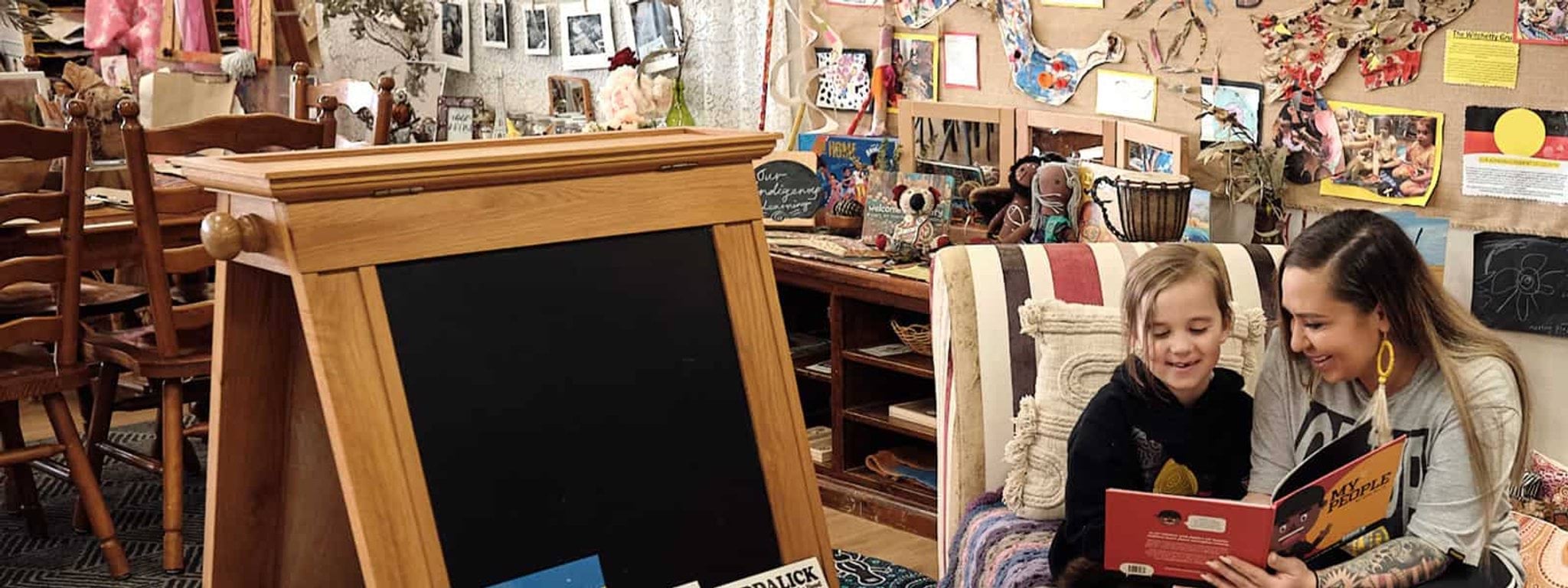Why do you want to share my information?
To help all children in Victoria live safe and happy lives, including First Nations children, the Victorian Government is improving the way information is shared by certain professionals who work with children.
Many services already share information, including Aboriginal Health Organisations. Child Information Sharing makes it easier for these professionals to better support the children they work with, which helps create better outcomes for them and their communities. There are rules around what can be shared and who can share that information.
How does it help families, carers, children and young people?
Children may need support at some stage in their lives.
From when they’re born until they turn 18, children and their families are better supported by professionals and organisations with Child Information Sharing.
How does it help professionals?
Child Information Sharing allows certain professionals like teachers and nurses to share their experience and knowledge about a child with each other.
By sharing this information, professionals can paint a more complete picture of a child and better understand how they can support the child’s wellbeing or safety.
Example
Kya has just started Prep. Her new teacher notices she’s very shy and doesn’t seem comfortable in the classroom. By requesting information from Kya’s Kindergarten, the teacher learns that she’s moved to a public school from an Aboriginal Early Childhood Centre and doesn’t know any of her new classmates.
This information can be shared under Child Information Sharing, as it allows Kya’s teacher to understand that she identifies as Aboriginal or Torres Strait Islander and helps them create a culturally safe learning environment that supports Kya.
Who are you sharing information with? How will it be used?
The type of information shared
Information will only be shared when it supports the wellbeing or safety of a child.
The information shared could include details about a child’s family life or professional support they’re getting.
This helps services work together for better outcomes for children:
- increasing cooperation between families and services
- helping professionals better support families
- identifying issues or risks for children and families sooner.
Who can share and access information?
Only certain people can share information – not everyone.
These people are professionals who have an obligation to care for and protect children, such as teachers, doctors, social workers and counsellors, nurses and law enforcement.
Example
Marli had verbal developmental delays when she started attending 4 year old kinder. The kinder allocated funding for onsite Allied Health Services, including Speech and Occupational Therapy, as well as The Victorian Aboriginal Health Service Under 5’s clinic. This allowed staff to work with Marli, her family and the educators at the kinder to develop a comprehensive Inclusion Plan that would best support Marli at home and at kinder. Information sharing also enabled referral pathways to have Marli professionally diagnosed.
This is an example of when professionals can choose to share information under Child Information Sharing, and who they can share it with.
When can information be shared?
To protect the privacy of your family, information cannot be shared unless it will be used to support the wellbeing of a child or group of children, or helps in providing services, making plans, investigating or managing risks to children.
For further details regarding the conditions which must be met before information can be shared, visit Frequently Asked Questions: What do I need to know to decide what can and can't be shared.
How is information shared?
Authorised organisations and professionals can either ask for information or decide to share it.
Keeping information private and secure
Part of protecting children is keeping their information safe and secure.
Child Information Sharing supports existing privacy laws by telling professionals when they can share information. It is an offence to share confidential information when it isn’t needed. Also, all information must be securely stored by individual organisations. Training is provided to authorised staff members, so they’re aware of their responsibilities.
Example
Andy is a social support worker who receives a request from a high school to share information about Cody. Andy supported Cody’s family when they were briefly homeless. After speaking with Cody and his family, Andy chooses not to share information about their living situation, as he suspects it might be used to exclude Cody from enrolling at the school.
This is an example where professionals may choose not to share information as it is not being used to support the wellbeing or safety of Cody or his family.
Complaints
If you’re worried information might have been shared in a way that is not permitted by Child Information Sharing, you have the right to provide feedback and make a complaint.
To make a complaint, start by speaking to the organisation that shared the information. All organisations should have procedures in place for dealing with complaints, and these should be easily available, often on their website.
If you are not satisfied that the matter has been resolved, you can make a complaint to:
The Office of the Victorian Information Commissioner if the complaint is about personal information
- Visit the OVIC website or phone 1300 582 113
The Health Complaints Commissioner (HCC) if the complaint is regarding health information
Visit the Health Complaints Commissioner website or
Telephone: 1300 582 113
More information
If you’d like to learn more about Child Information Sharing, you can:
Call us: 1800 549 646
Write to us: CISandFVIS@education.vic.gov.au
Visit the website at Information Sharing and MARAM reforms
Resources
Updated
